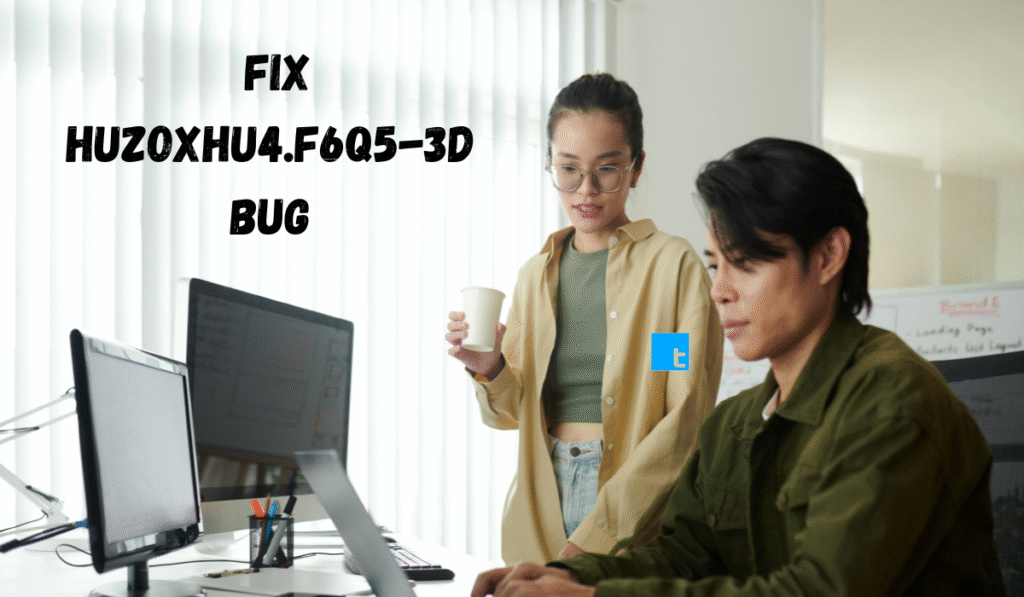Conquering the Huzoxhu4.F6Q5-3D Bug: Your Ultimate Fix Guide
Identifying the Huzoxhu4.F6Q5-3D Bug
The Huzoxhu4.F6Q5-3D bug has distinct characteristics that can be identified through specific symptoms. Users may experience a range of issues when this bug manifests, some of which include cryptic error messages, system crashes, and significant performance degradation. These symptoms often act as the primary indicators that one is potentially dealing with the Huzoxhu4.F6Q5-3D bug.
Error messages associated with this bug may be vague or technical in nature, making it challenging for users to understand the root cause of the problems they are facing. Common messages may include references to resource access failures or incompatibility issues. It is crucial to take note of these messages, as they can provide valuable clues for diagnosis. As well, a noticeable lag when running applications, or frequent freezing during important tasks, further suggests the presence of the Huzoxhu4.F6Q5-3D bug.
This bug does not discriminate based on operating systems. Users on Windows, macOS, and various Linux distributions have reported similar symptoms, highlighting its pervasive nature across different platforms. The Huzoxhu4.F6Q5-3D bug can also impact various software applications, from standard office suites to advanced design and editing tools, causing disruptions in workflow and productivity.
In identifying this bug, one should consider monitoring the system for unusual activity, such as unexpected shutdowns or erratic behavior in installed applications. Collectively, these signs should lead the user to suspect the existence of the Huzoxhu4.F6Q5-3D bug, prompting further investigation into potential fixes. By carefully assessing their device’s behavior and correlating it with known symptoms, users can better determine if they are indeed facing the Huzoxhu4.F6Q5-3D bug and need to take appropriate corrective actions.
Troubleshooting Steps to Fix the Huzoxhu4.F6Q5-3D Bug
When dealing with the Huzoxhu4.F6Q5-3D bug, it’s essential to adopt a systematic approach to troubleshoot effectively. Begin by performing basic checks to establish if the issue is persistent across different applications or confined to a particular program. Restarting the device is often a good first step; it clears temporary files and resets the system environment, which may resolve minor glitches.
If the problem persists, checking system logs can be invaluable. Access the Event Viewer on Windows or Console on macOS to identify relevant error messages that could provide insights into the Huzoxhu4.F6Q5-3D bug. Look for warnings or error messages that align with the times you experienced the issue and take note of any error codes. This information can be critical for further troubleshooting.
Next, you may want to update your software and drivers, as outdated versions can contribute to bugs. Ensure that your operating system and all related drivers are up to date. This step not only helps mitigate issues but also often includes enhancements for stability and performance.
If the Huzoxhu4.F6Q5-3D bug is still unresolved, utilize built-in error-checking tools. For Windows users, running the System File Checker tool (SFC) can help identify and repair corrupted system files. On macOS, the Disk Utility application includes options for verifying and repairing disk permissions, which can also be useful.
Another recommended step is to initiate a clean boot to determine if background processes are causing interference. A clean boot starts Windows with a minimal set of drivers and startup programs, allowing you to identify conflicting programs.
By following these detailed steps, you stand a better chance of diagnosing and resolving the Huzoxhu4.F6Q5-3D bug effectively. If all else fails, it may be beneficial to consult support forums or professional help for additional guidance.
Preventing Future Occurrences of the Huzoxhu4.F6Q5-3D Bug

To effectively safeguard against the Huzoxhu4.F6Q5-3D bug, users must adopt a proactive approach that encompasses regular system updates, judicious software installation practices, and diligent maintenance of system performance. Ensuring that your operating system and all software applications are up to date is paramount. Updates often contain security patches and fixes that address vulnerabilities, including those exploited by the Huzoxhu4.F6Q5-3D bug. Consistently checking for updates and enabling automatic updates wherever possible can aid significantly in reducing the risk of encountering similar issues in the future.
In addition to system updates, it is essential to exercise caution during the installation of new software. Before downloading any application, users should conduct thorough research to ascertain its credibility and reliability. This can include reading user reviews, checking developer information, and scanning software with reputable antivirus programs prior to installation. By only installing trustworthy software, the likelihood of encountering the Huzoxhu4.F6Q5-3D bug or similar threats can be greatly minimized. Furthermore, adhering to the principles of selective downloading can further enhance overall system security.
Another crucial element in preventing future occurrences of the Huzoxhu4.F6Q5-3D bug is maintaining optimal system performance. Regularly performing system scans and cleaning up unnecessary files will help in sustaining a healthy operating environment. A well-maintained system can help in the early detection of bugs and potential threats that could compromise system integrity. Moreover, utilizing comprehensive antivirus software provides an additional safeguard by continuously monitoring your system for unusual activity, effectively acting as a barrier against the onset of malware, including variants related to the Huzoxhu4.F6Q5-3D bug.
Community Insights: Experiences with the Huzoxhu4.F6Q5-3D Bug
The Huzoxhu4.F6Q5-3D bug has impacted a significant number of users across various platforms, prompting a wave of community engagement as individuals share their experiences. Many users have faced this bug unexpectedly, leading to system crashes and interruptions in daily workflow. A common sentiment among those who encountered the Huzoxhu4.F6Q5-3D bug is the frustration it engendered, particularly for professionals reliant on seamless technology performance.
One prevalent experience described by users is the initial confusion surrounding the origins of the bug. Some reported that it seemed to appear after a particular software update or when using specific applications, making troubleshooting complex. Users found themselves searching forums and social media for insights from others who had faced the same challenge. This collective gathering of information has been instrumental in forming a community that shares not only frustrations but also potential solutions.
A particularly useful tip shared by several users was to check for compatibility issues with third-party software. By removing or updating problematic applications, many found they could mitigate the effects of the fix huzoxhu4.f6q5-3d bug. Others highlighted the importance of regularly updating system drivers and ensuring that all software was running the latest versions available, which seemed to reduce the incidence of the bug significantly.
Moreover, peer-to-peer support has emerged as a vital resource. Various online forums and social media groups have become platforms for affected individuals to collaborate and share troubleshooting techniques. This sense of community has fostered an environment where users can exchange tips and encourage one another through the complexities of resolving the Huzoxhu4.F6Q5-3D bug. In conclusion, these shared experiences not only highlight diverse approaches to fixing the bug but also reflect the solidarity found through collective struggle and support.



Post Comment